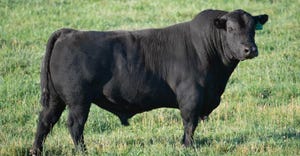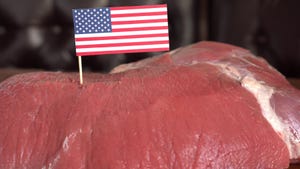Calving Management Practices
Calving season is a critical time for cow-calf operations. The birth and the days that follow are the most hazardous period in a calf’s life, explain the veterinarians at the National Animal Health Monitoring System (NAHMS), a part of USDA’s Animal and Plant Health Inspection Service

Calving season is a critical time for cow-calf operations. The birth and the days that follow are the most hazardous period in a calf’s life, explain the veterinarians at the National Animal Health Monitoring System (NAHMS), a part of USDA’s Animal and Plant Health Inspection Service.
Data collected by NAHMS in its Beef 2007-08 study detail the management practices used by ranchers in 24 states. This demographic represents 88% of all U.S. beef cows.
One fundamental management practice to ensure a successful calving is to have a defined and narrow calving season. Half of operations (50%) had calves born in three or fewer months and 16% of operations had a four-month calving season. A total of 30% of operations calved between five and 11 months of the year and 3.4% calved year ‘round.
Obviously, to have a defined calving season, it’s necessary to have a defined breeding season (bulls pulled from the cowherd at least 30 days during the year). More than half (54.5%) of the operations in the study, however, did not have a defined breeding season, while 34% did claim to have a defined breeding season. Of the operations claiming to have a defined breeding season, 61% had a breeding season longer than 84 days.
Most frequently, operations with one defined breeding season cited tradition as the reason for determining the timing of the last calving season. Only 4.3% of the operations cited labor availability as the determining factor for timing of the calving season, while 28% listed weather as the determining factor.
The majority of calves were born to heifers and cows that required no assistance (88% and 96%, respectively). And when heifers and cows did need assistance, most ranchers defined it as an “easy pull.”
Calving difficulty is a part of calving season, and veterinarians generally recommend that heifers and cows be assisted if they are in active labor for more than two hours. Nevertheless, almost half of operations in the study allowed cows to labor for three hours or more before intervening, and 40% allowed heifers to go for more than three hours before assisting the birth.
To ensure timely intervention in a hard birth, veterinarians recommend regular observation. For cows, 89% of operations did regular calving checks, and 93% reported checking heifers regularly.
Of the operations that regularly observed heifers during calving, 27% checked one time/day and 39% observed heifers three or more times a day. On operations that regularly observe cows during calving, 40% checked once daily and 28% checked three or more times/day.
Health management is an important part of ensuring calves get a strong start. Separating pairs from pregnant cows can assist in checking new calves and can reduce pathogen exposure. However, only 14% of producers separated cow-calf pairs from pregnant cows. Operations with 200 or more cows were more likely to separate pairs (46%) than operations with fewer cows.
To see this and other data sets from the Beef 2007-08 study, go to www.aphis.usda.gov.
About the Author(s)
You May Also Like

.png?width=300&auto=webp&quality=80&disable=upscale)

